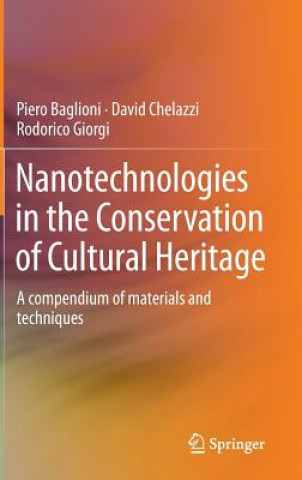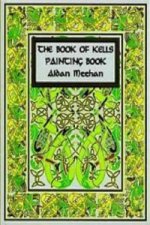
Livrare
Consilier de cumpărături





Nu se pretează? Nu contează! La noi puteți returna bunurile în 30 de zile
 Voucher cadou
orice valoare
Voucher cadou
orice valoare
Cu un voucher cadou nu veți da greș. În schimbul voucherului, destinatarul își poate alege orice din oferta noastră.
Compendium of Nanoapplications for Conservators, 1
 engleză
engleză
 346 b
346 b
30 de zile pentru retur bunuri
Ar putea de asemenea, să te intereseze


This compendium deals with applications of novel nanotechnology for the preservation of several artistic substrates. Both the principles and practical usage of different innovative nanomaterials are presented and applications are discussed for different classes of common movable and immovable artistic substrates.§§The compendium contents are structured as follows: first, an overview is provided about the main "nanotools" that have been developed in the last three decades (dispersions of nanoparticles, micellar solutions, microemulsions and gels), explaining their main features and feasibility. Then, specific chapters are dedicated to art materials (wall and easel paintings, stones, paper, canvas and wood), starting with the main degradation paths and discussing applications for their cleaning, consolidation, or deacidification. In all such chapters a section will be dedicated to protocols, discriminating between protocols that are can already be considered as accepted in the restoration field and procedures that are still under validation. The principal aim of the book is thus to provide end-users and conservators with information on the availability and applicability of different nano-materials and dispersed systems. In fact, while the preservation of historical and artistic heritage has a fundamental societal and economic importance, the methodologies adopted are still largely based on traditional materials that often lack the proper compatibility with the artistic substrates or imply drawbacks that prevent the long-term conservation of works of art. This is also due to a still poor dissemination of the potential and real advantages of new tools provided by colloids and soft matter, which can indeed offer solutions to preservation issues while enhancing the compatibility of the used materials, granting longer stability to the treated artworks. Another important aspect that will be stressed is related to the low impact of the nanotools on both the operators and the environment, with respect to some traditional methods. Finally, much attention will be dedicated to keep a scientific rigor while granting accessibility also to end-users that might come from humanistic or artistic areas, or who have previously approached preservation basing on a purely technical and empirical formation. We believe, in fact, that the synergistic cooperation between different disciplines and skills is a fundamental step in the conservation of cultural heritage. The level of the compendium will thus be balanced, providing essential background and references to advanced colloid and material science, while maintaining the main focus on the practical problems and solutions that are usually met in restoration facilities, workshops and ateliers.§§The ideal audience consists of all the possible conservation end-users: freelance conservators and restorers, personnel and experts of conservation institutes and museums, students of restoration schools (including universities and colleges that adopted conservation programs), and also scientists who are approaching preservation of works of art.§
Informații despre carte
 engleză
engleză




 Cum să cumpăr
Cum să cumpăr




























